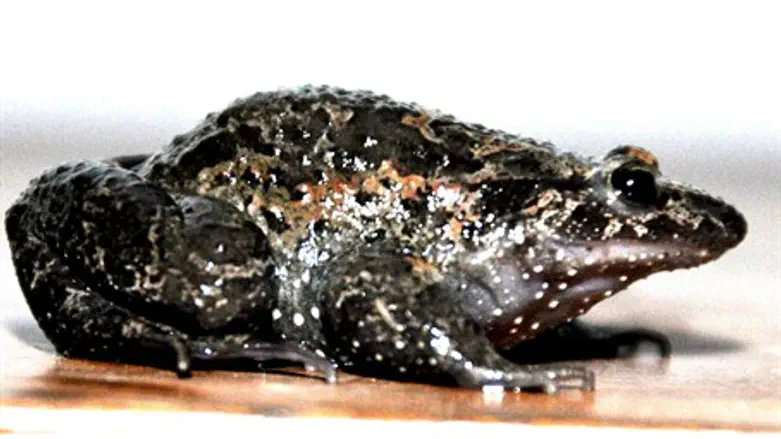
The first amphibian to have been officially declared extinct by the International Union for Conservation of Nature (IUCN) has been rediscovered in the north of Israel after some 60 years and turns out to be a unique “living fossil,” without close relatives among other living frogs, according to researchers at Hebrew University.
The Hula painted frog was catalogued within the Discoglossus group when it was first discovered in the Hula Valley of Israel in the early 1940s. The frog was thought to have disappeared following the drying up of the Hula Lake at the end of the 1950s, and was declared extinct by the IUCN in 1996. As a result, the opportunity to discover more about this species’ history, biology and ecology was thought to have disappeared.
However, a team of Israeli, German and French researchers now report in the scientific journal Nature Communications on an in-depth scientific analysis of this enigmatic amphibian.
Based on new genetic analyses of rediscovered individuals and the morphologic analyses of extant and fossil bones, the conclusion is that the Hula frog differs strongly from its other living relatives, the painted frogs from northern and western Africa. Instead, the Hula frog is related to a genus of fossil frogs, Latonia, which were found over much of Europe dating back to prehistoric periods and considered extinct for about a million years,
The results imply that the Hula painted frog is not merely another rare species of frog, but is actually the sole representative of an ancient clade of frogs (a group with a single common ancestor).
Plans to reflood parts of the Hula Valley and restore the original swamp habitat are in place, which may allow expansion in population size and a secure future for the Hula painted frog.
The combined research effort that led to the revelation and analyses of the previously considered “extinct” frog was conducted by Rebecca Biton, a Ph.D. student of Dr. Rivka Rabinovich of the Hebrew Universty Institute of Archaeology, in cooperation with Prof. Sarig Gafny of the Ruppin Acadmic Center, Prof. Eli Geffen of Tel Aviv University, Dr. Vlad Brumfeld of the Weizmann Institute of Science and other researchers from Israel, France and Germany.